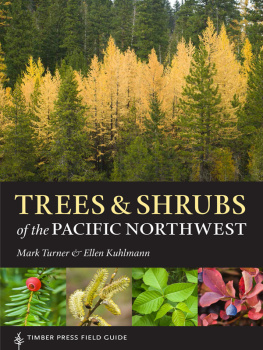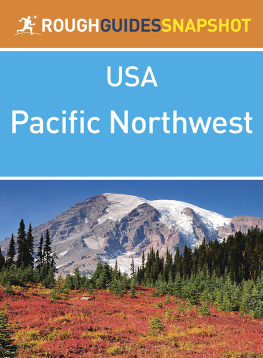Blount Tim - Birds of the Pacific Northwest
Here you can read online Blount Tim - Birds of the Pacific Northwest full text of the book (entire story) in english for free. Download pdf and epub, get meaning, cover and reviews about this ebook. City: Portland;Oregon, year: 2017, publisher: Timber Press, Incorporated, genre: Home and family. Description of the work, (preface) as well as reviews are available. Best literature library LitArk.com created for fans of good reading and offers a wide selection of genres:
Romance novel
Science fiction
Adventure
Detective
Science
History
Home and family
Prose
Art
Politics
Computer
Non-fiction
Religion
Business
Children
Humor
Choose a favorite category and find really read worthwhile books. Enjoy immersion in the world of imagination, feel the emotions of the characters or learn something new for yourself, make an fascinating discovery.

- Book:Birds of the Pacific Northwest
- Author:
- Publisher:Timber Press, Incorporated
- Genre:
- Year:2017
- City:Portland;Oregon
- Rating:5 / 5
- Favourites:Add to favourites
- Your mark:
- 100
- 1
- 2
- 3
- 4
- 5
Birds of the Pacific Northwest: summary, description and annotation
We offer to read an annotation, description, summary or preface (depends on what the author of the book "Birds of the Pacific Northwest" wrote himself). If you haven't found the necessary information about the book — write in the comments, we will try to find it.
Birds of the Pacific Northwest — read online for free the complete book (whole text) full work
Below is the text of the book, divided by pages. System saving the place of the last page read, allows you to conveniently read the book "Birds of the Pacific Northwest" online for free, without having to search again every time where you left off. Put a bookmark, and you can go to the page where you finished reading at any time.
Font size:
Interval:
Bookmark:

Hooded Merganser
John Shewey & Tim Blount with Hendrik Herlyn, editor
TIMBER PRESS FIELD GUIDE

Great Egret

Golden-crowned Sparrow
The corner of the world we know as the Pacific Northwest is home to an amazing array of bird life. From the southern borders of Oregon and Idaho, north to southern British Columbia, to the Pacific Ocean in the west, and east to the Rocky Mountains, almost 400 bird species occur. This includes nearly 300 breeding species, thanks to the regions incredibly diverse habitat types: open ocean, beaches and bays, coniferous forest, deciduous woodlands, mixed forests, high mountains, deserts, shrub steppe, rivers and lakes big and small, just to name a few. Such a rich and varied assemblage of habitats assures an equally varied avian population, from bird species that occupy very small enclaves of the region, to widespread generalists that occur in many habitats. Birding strategies here are diverse, as wellfrom a casual interest to the near-addictive pursuit of certain species. Indeed, birdwatching enthusiasts from the far-flung corners of the United States and beyond routinely travel to the Pacific Northwest to pursue their passionand for good reason: they can see birds found few other places and they can observe substantial numbers of species that are new to them.
We ourselves are Pacific Northwest lifers; weve lived in various parts of both Oregon and Idaho, and traveled substantially throughout the region. This is our home, and the amazing diversity of birds and habitats in the Northwest is a big reason why. This guide is the culmination of our passion for birds, the Pacific Northwest, and in particular, Pacific Northwest birds.
Our hope for Birds of the Pacific Northwest is to serve all levels of birdwatchers, whether you simply enjoy feeding songbirds in your backyard or are an ardent enthusiast who considers birding your primary hobby. Carry the book with you in the field, keep it handy on your bookshelf, study it and learn more about your favorite species and birds that are new to you. Above all, enjoy it and embrace the wonder of Northwest birds.

Basic equipment for birdwatching is simple: a pair of binoculars and this book.
Birdwatching is remarkably low tech compared to many other hobbies, encumbered by only 2 essential accoutrements: a pair of binoculars and a bird book. Binoculars come in myriad brands, models, and prices, and generally, you get what you pay forquality, meaning both image quality and product durability, comes at higher prices. Importantly, binoculars vary in magnification power, field of view, and light gathering ability; binoculars or their packaging are marked with a code that provides those details, so binoculars marked 735 (popular with birders) offer magnification 7 times greater than what you see with the naked eye, and a front lens diameter of 35 millimeters. Also popular among birders, 842 binoculars have a magnification factor of 8, and a front lens diameter of 42 millimeters. The diameter of the front lens dictates the lenss ability to gather light; the more light gathered, the brighter and more detailed your view. However, the larger the lens diameter, the smaller the field of view.
The highest magnification and the largest front lens diameter possible might seem ideal, but binoculars more powerful than 1050 enter the realm of diminishing marginal returns. For starters, smaller fields of view with larger-diameter lenses make finding the object you want to look at more difficult because the binoculars see a smaller area. A 50-millimeter lens views a smaller area than a 35-millimeter lens. A small field of view plus lots of magnification can make tracking a small bird at close range very difficult. Also, more powerful binoculars tend to be bigger and heavier, and they exaggerate the consequence of even slightly shaky hands into substantial image shakiness, although binoculars with image stabilization technology are also available. In essence, powerful 1050 binoculars are best for distant birds that dont move quickly, and for stable hands (or simply rest your elbows on a solid surface when you use them). For magnification greater than a factor of 10, spotting scopes (tripod mounted or vehicle-window mounted) are a better option than binoculars and can be very useful in identifying birds at extreme distances.
Youll spend most of your birdwatching time outdoors, under a variety of conditions, so dress for the weather and the landscape. A sturdy, comfortable pair of hiking shoes or boots makes birding by foot much less fatiguing, and layered clothing for cool or cold weather is essential, including a rain parka. When you venture outdoors in the Northwest, remember that in many areas mosquitos abound in spring and summer, and ticks are often common. The sun can be intense, as can the cold of winter and early spring. Plan ahead and protect yourself accordingly.
Birdwatching by vehicle is also very popularyou can see many different species just by keeping your eyes open on a drive through the countryside or by parking at places that provide excellent viewing opportunities. Slowly driving a forest road deep in the mountains, windows down so you can hear the birds, is a decidedly pleasant way to spend an early morning, but even commuting along ever-busy Interstate 5 (or virtually any other freeway in the region) offers ample opportunity to see a wide variety of interesting birds. Safety first, howeverthe driver needs to do the driving, not the watching.
The Pacific Northwest offers adventurous birders a chance to visit remote regions, from the deserts of southeast Oregon to the mountains of central Idaho. Off-the-beaten-path birding mandates a few extra precautions. Backcountry roads in the Northwest can be rugged and sometimes downright treacherous. If you will be driving remote desert or mountain roads, consider carrying 2 spare tires, rather than one, and make sure you have all the tools and know-how you need to change a tire in the middle of nowhere. Be aware that many backcountry roads, especially in the desert, can quickly turn to unpassable goo in the rain. Also consider carrying 5 to 10 gallons of extra gasoline (on the exterior of the vehicle), and give a spare vehicle key to a member of the party or stash a spare key on the vehicle where any member of the party can get to it if needed. Remember a couple of valuable adages weve learned to embrace: use four-wheel drive to get out of trouble, not to get into trouble, and if you can walk a road faster than you can drive it, you probably ought to walk it.

Spotting scopes mounted on tripods (or vehicle windows) are especially useful for viewing distant birds.
Carry basic emergency supplies to get you through a few extra days should you happen to be stranded by weather, road conditions, vehicle breakdown, or any other form of just plain bad luck. Essentials include plenty of extra drinking water, extra food, and a sleeping bag or two for emergency warmth.
Next pageFont size:
Interval:
Bookmark:
Similar books «Birds of the Pacific Northwest»
Look at similar books to Birds of the Pacific Northwest. We have selected literature similar in name and meaning in the hope of providing readers with more options to find new, interesting, not yet read works.
Discussion, reviews of the book Birds of the Pacific Northwest and just readers' own opinions. Leave your comments, write what you think about the work, its meaning or the main characters. Specify what exactly you liked and what you didn't like, and why you think so.





